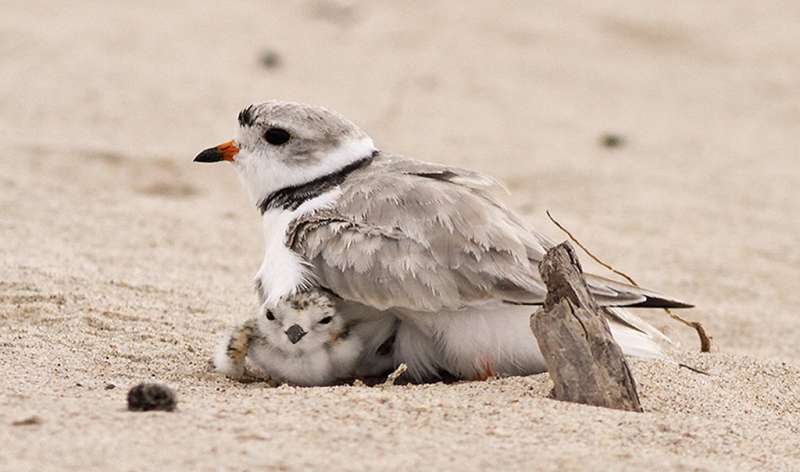Protecting piping plovers

Visitors to Sleeping Bear Dunes National Lakeshore are often treated to tiny scurrying beachcombers - piping plovers. Future visitors, however, could see fewer of these celebrated shorebirds.
A Michigan State University study reveals that the endangered shorebird population could decline over the next 10 years and changes in management strategies are needed. The authors demonstrate that current counting methods may not accurately predict future plover populations without considering a growing predator population.
"Despite current management efforts, the population is far from the federal recovery goal of 150 pairs and continues to be threatened by avian and mammalian predation," said Sarah Saunders, MSU integrative biologist and lead author of the study in the Journal of Applied Ecology. "However, the degree to which predation pressure impacts population growth and viability has never been explicitly quantified."
The Great Lakes population of piping plovers has been increasing in recent years, with a current estimate of 75 nesting pairs. Conserving small and declining populations requires biologists to make decisions regarding complex ecological systems in the face of considerable uncertainty. But traditional counting methods don't account for all sources of uncertainty, such as birds of prey.
Based on an increasing trend in the population, the number of nesting pairs is forecasted to increase to 91 by 2026, according to the team using traditional methods.
However, the new MSU model, which incorporates multiple sources of uncertainty, shows that the piping plover population could actually decline in the same time period if additional conservation actions are not taken.
Saunders worked with Elise Zipkin, MSU integrative biologist, to develop an integrated population model coupled with a Bayesian population viability analysis to bring many data types into a single modeling framework.
The results show that by integrating many data sources - long-term population survey, nest monitoring and mark-resight data (banding birds and recording their presence during subsequent annual surveys) - our understanding of past and future population changes can be improved.
Bayesian theory was developed more than 200 years ago, but its use in population forecasts is still relatively new.
This approach has many statistical applications, one of which is improving accuracy when data is uncertain. So adding critical factors, such as the effect of one of piping plover's biggest predators - merlins - improves forecasting dramatically.
The good news is that scientists now have a better tool to improve the accuracy of future piping plover population estimates. The bad news is that the shorebird's numbers could continue to be threatened unless additional efforts are made to control merlins and other predators.
Like many raptors, merlin populations have increased due in part to the banning of the pesticide DDT. Their growth has been at the partial expense of piping plovers. These falcons use their stealth and speed to feast on shorebirds.
"Piping plover recovery actions should consider systematic mitigation efforts," Zipkin said. "Our modeling results show that conservation efforts should include strategies that improve both juvenile and adult survival rates on a site-by-site basis."
Journal information: Journal of Applied Ecology
Provided by Michigan State University




















